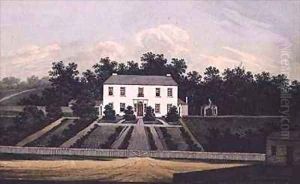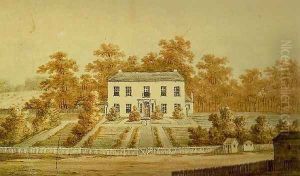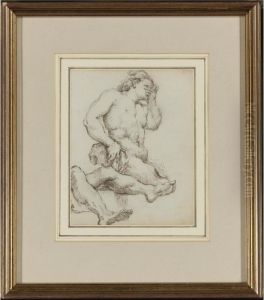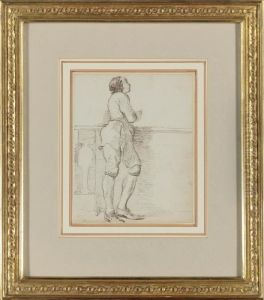George William Evans Paintings
George William Evans was an English-born surveyor and explorer who played a significant role in the early colonial development of Australia. Born on January 5, 1780, in Warwick, England, Evans was the son of a bookseller. He developed an interest in art and became an accomplished draftsman, which later proved invaluable in his surveying career.
In 1796, Evans joined the Royal Navy but his naval career was short-lived. He turned to teaching and opened a school in London, where he taught drawing and mathematics. His life took a significant turn when he decided to emigrate to the then British colony of New South Wales, arriving in Sydney in 1802.
Evans's skills as a draftsman and surveyor quickly caught the attention of Governor Philip Gidley King, who appointed him as an acting surveyor. His most notable work began in 1813 when he was tasked to follow the route blazed by Gregory Blaxland, William Lawson, and William Charles Wentworth across the Blue Mountains. Evans's exploration led to the discovery of the fertile Bathurst Plains and he was the first European to record a detailed account of the region's geography and natural resources. This expedition paved the way for the expansion of the colony into the interior of Australia.
Throughout his career, Evans undertook several other important explorations and produced a number of maps and sketches of the regions he surveyed, which were crucial for further inland settlement. In recognition of his contributions, he was appointed Deputy Surveyor-General in 1815.
Evans's work was not limited to exploration and surveying. He also took an active interest in the scientific and cultural life of the colony, contributing to various institutions and becoming a founding member of the Philosophical Society of Australasia in 1821.
Despite his achievements, Evans faced financial difficulties and a lack of recognition later in his career. He returned to England in 1826 hoping to secure a pension but was unsuccessful. He came back to Australia in 1827 and continued to work in various administrative positions until his retirement.
George William Evans died on October 16, 1852, in Hobart, Tasmania. His contributions to the exploration and mapping of Australia are considered significant, and his detailed records and drawings provide a valuable historical account of early colonial Australia.



